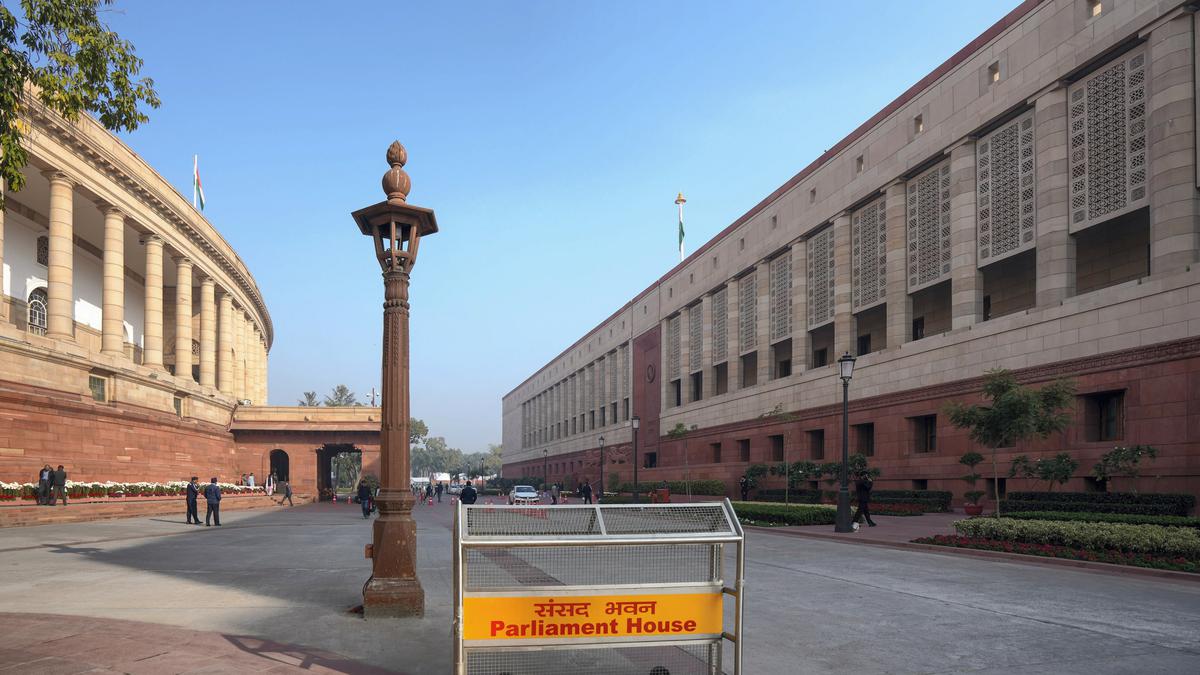
Parliament breach | Act a well-planned conspiracy, Delhi Police tell court
The Hindu
Delhi Police seeks custody of 4 accused of security breach in Parliament, invoking anti-terror provisions of UAPA.
Seeking custody of four persons, arrested for the security breach in Parliament on December 13, the Delhi Police told the Patiala House Court that the accused had carried pamphlets claiming Prime Minister Narendra Modi to be a “missing person” and “proclaimed offender”.
The Delhi Police have invoked anti-terror provisions of the Unlawful Activities (Prevention) Act on the accused, identified as Manoranjan D., Sagar Sharma, Amol Shinde, and Neelam Devi. On December 14, the Patiala House Court granted the police seven days’ custody of all the accused.
Assistant Public Prosecutor (APP) Atul Srivastava informed Additional Sessions Judge Hardeep Kaur that the act was “a well-planned conspiracy” and attack on the Parliament of India. Also, the accused could be associated with “terrorist organisations”.
“Please see the pamphlet they were carrying. It has a picture of our Prime Minister who is shown as a ‘missing person’. They have declared a reward to be paid by a Swiss bank [for finding him]... they tried to show the PM as a ‘proclaimed offender’,” Mr. Srivastava said while seeking 15 days’ police remand of all the accused.
The police further submitted that the accused had created a social media group called ‘Bhagat Singh Fan Club’. They bought shoes from Lucknow and gas cannisters from Mumbai. The shoes had cavities to hide the canisters, the police said. Explaining why 15 days’ remand is necessary, the Delhi Police said the accused need to be taken to Mumbai and Lucknow for investigation.
The counsel for the accused argued that four or five days of custody would be sufficient to undertake the exercise. The APP responded that the police have to investigate the case, and not just visit the cities.
The court later granted police custody for a period of seven days.

Hampi, the UNESCO-recognised historical site, was the capital of the Vijayanagara empire from 1336 to 1565. Foreign travellers from Persia, Europe and other parts of the world have chronicled the wealth of the place and the unique cultural mores of this kingdom built on the banks of the Tungabhadra river. There are fine descriptions to be found of its temples, farms, markets and trading links, remnants of which one can see in the ruins now. The Literature, architecture of this era continue inspire awe.

Unfurling the zine handed to us at the start of the walk, we use brightly-coloured markers to draw squiggly cables across the page, starting from a sepia-toned vintage photograph of the telegraph office. Iz, who goes by the pronouns they/them, explains, “This building is still standing, though it shut down in 2013,” they say, pointing out that telegraphy, which started in Bengaluru in 1854, was an instrument of colonial power and control. “The British colonised lands via telegraph cables, something known as the All Red Line.”

The festival in Bengaluru is happening at various locations, including ATREE in Jakkur, Bangalore Creative Circus in Yeshwantpur, Courtyard Koota in Kengeri, and Medai the Stage in Koramangala. The festival will also take place in various cities across Karnataka including Tumakuru, Ramanagara, Mandya, Kolar, Chikkaballapura, Hassan, Chitradurga, Davangere, Chamarajanagar and Mysuru.








